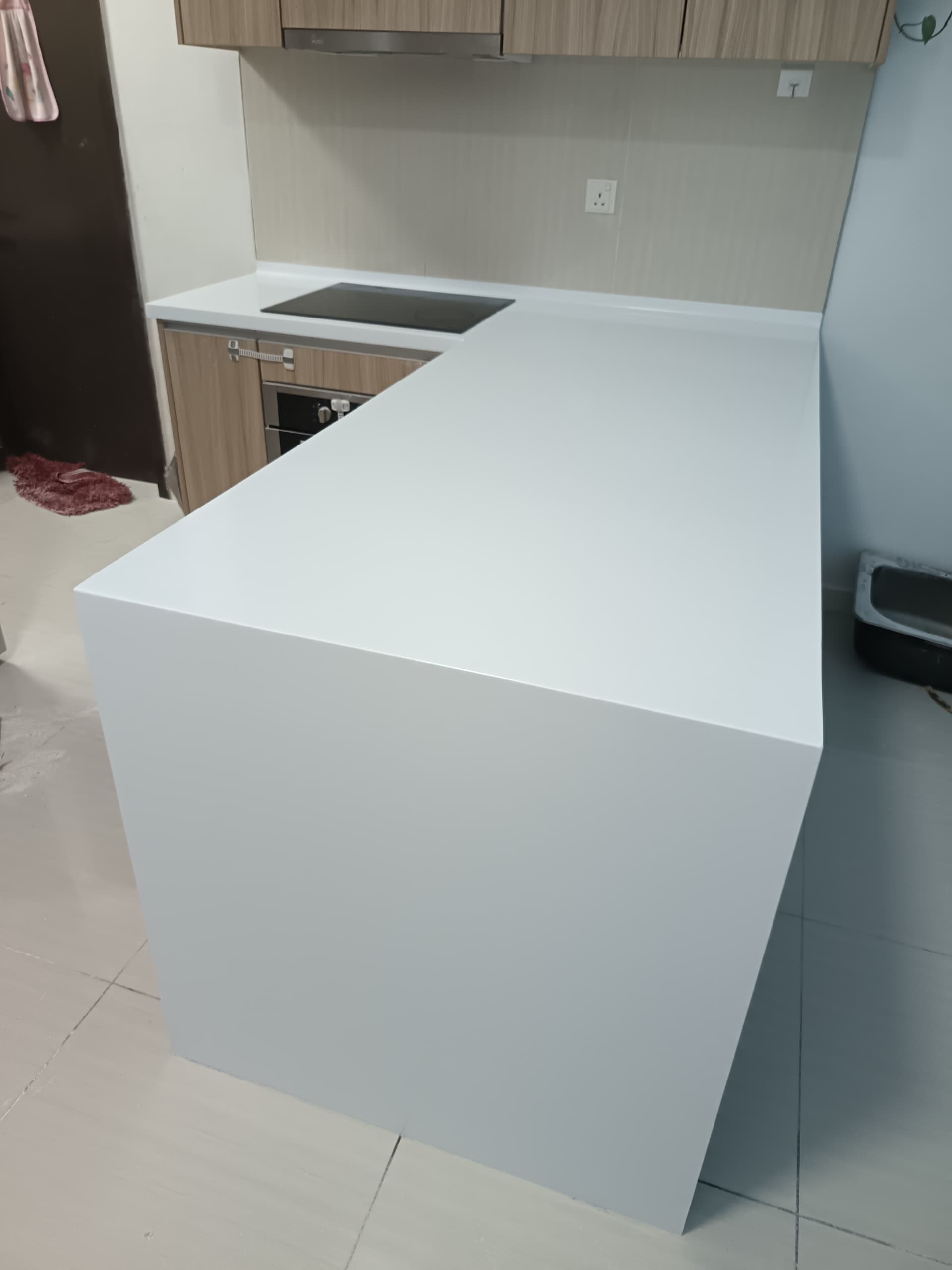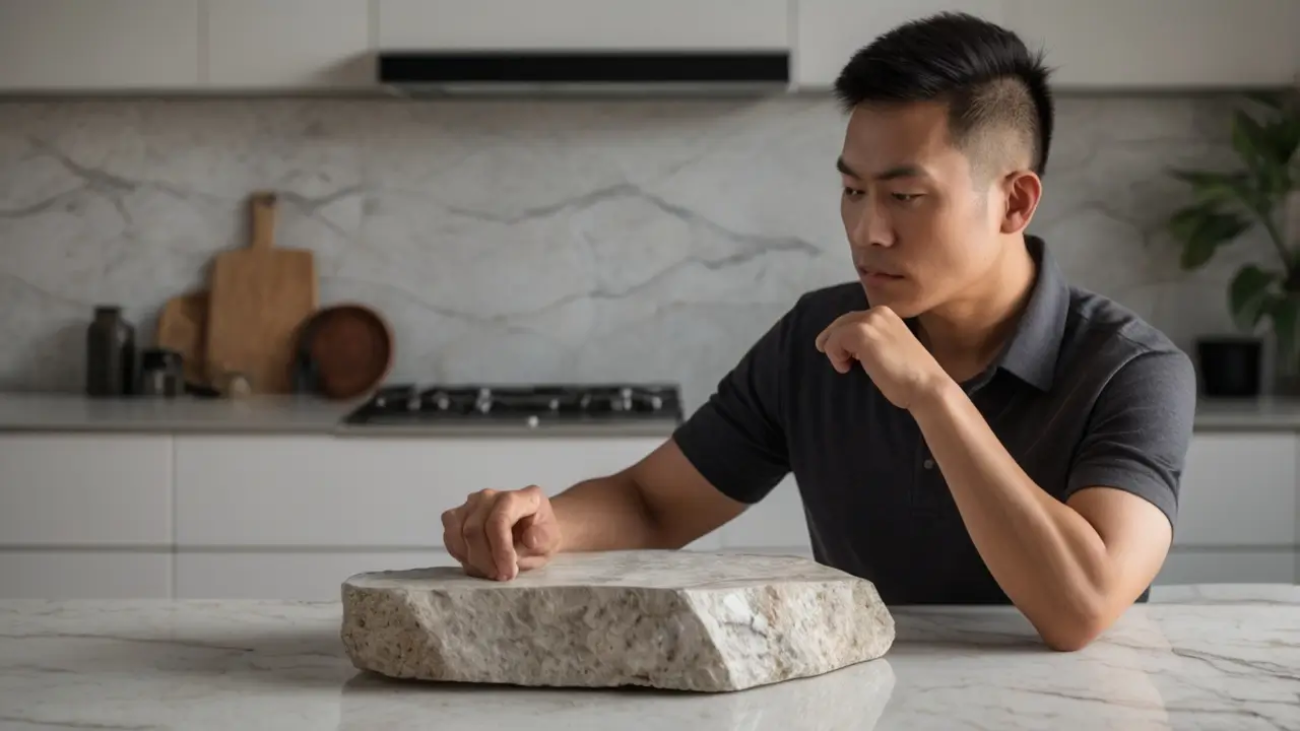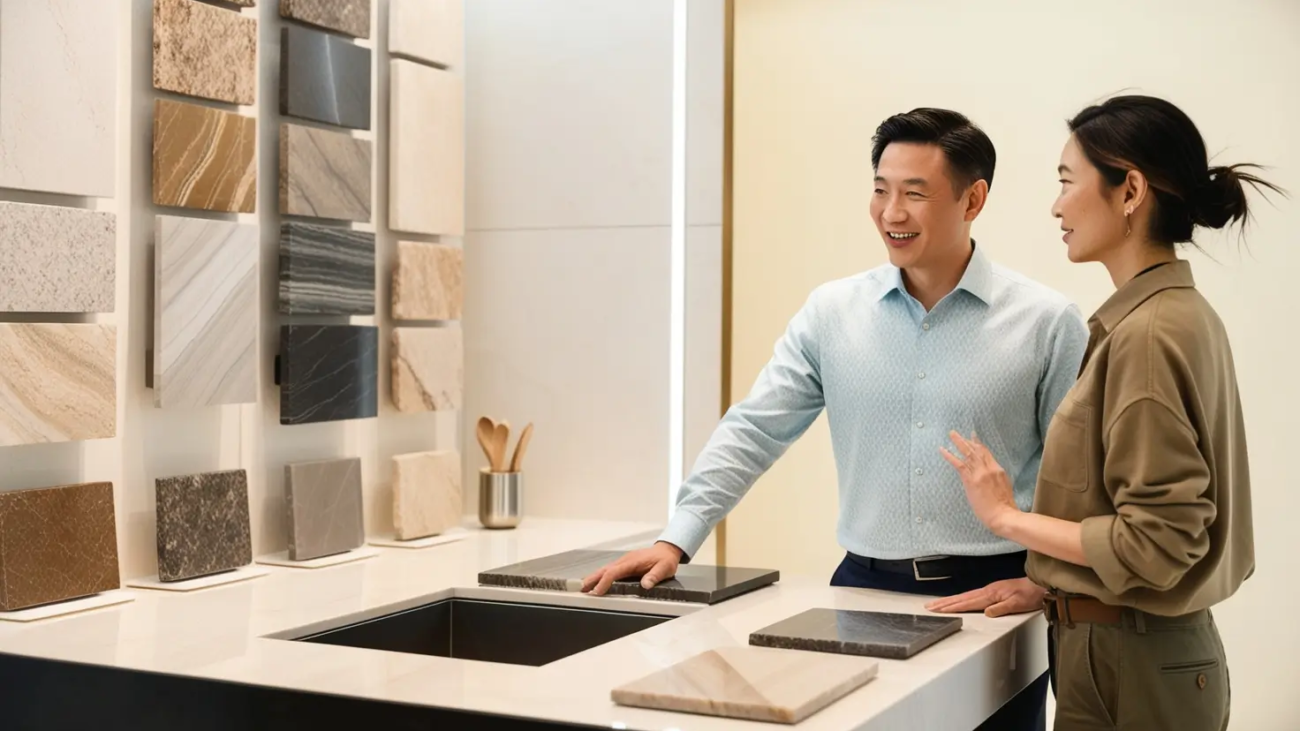1. Introduction: Upgrade Your Kitchen with Confidence
Are you ready to transform your outdated kitchen into a modern masterpiece? For homeowners seeking to renew their space, upgrading your countertop can be the game-changer you need. Today’s trend is all about the revolutionary Solid Surface Kitchen Countertop—a material that offers durability, elegance, and an ultra-sleek design. This article will explore how this innovative option not only meets the challenges of daily kitchen use but also elevates your home’s overall style. Discover why more modern homeowners are turning to Solid Surface for an upgrade that truly stands out.
2. The Rising Trend: Why Solid Surface Kitchen Countertops?
Solid Surface Kitchen Countertops are quickly becoming the top choice for kitchen renovations. Unlike traditional materials, Solid Surface offers a seamless, non-porous surface that resists stains, scratches, and bacteria. Its versatility in design allows you to integrate sinks and backsplashes without visible seams, creating a visually striking centerpiece. As modern lifestyles demand both beauty and practicality, the Solid Surface Kitchen Countertop is making its mark by delivering a sophisticated look while offering the reliability you need in a busy home. It’s a trend that challenges outdated ideas about kitchen surfaces and promises a fresh start.

3. Unique Selling Point 1: Seamless Durability – “Ever Wondered if Your Countertop Could Last Forever?”
Imagine a countertop that not only looks pristine today but remains flawless for years to come. With a Solid Surface Kitchen Countertop, durability isn’t just a promise—it’s a guarantee. This material is engineered to withstand daily wear and tear without compromising its stunning finish. The seamless design means there are no cracks or crevices where dirt can accumulate, making it both an aesthetic and hygienic marvel. This USP challenges the common belief that beauty fades with time. Experience the confidence of a countertop that stands up to heavy use while maintaining its elegance, proving that enduring quality can be both practical and visually captivating.
4. Unique Selling Point 2: Hygiene Redefined – “Think Your Countertop is Clean Enough? Think Again.”
In today’s health-conscious world, a clean kitchen is a must-have. The Solid Surface Kitchen Countertop redefines hygiene with its non-porous construction that resists bacterial growth and stains. Unlike conventional countertops that can harbor germs, this material ensures that spills wipe away effortlessly, leaving no trace behind. This USP challenges the notion that regular cleaning is enough—Solid Surface offers a deeper level of cleanliness that protects your family’s health. Embrace a countertop that doesn’t just look immaculate but actively contributes to a safer and more sanitary kitchen environment.
5. Unique Selling Point 3: Timeless Aesthetics – “Skeptical about Trends? Discover Enduring Elegance.”
Trends come and go, but style remains eternal. A Solid Surface Kitchen Countertop offers a minimalist, elegant look that complements any modern décor. Its sleek finish and subtle patterns create an understated luxury that never feels outdated. This hook sparks curiosity by challenging the belief that stylish surfaces are always high maintenance or faddish. Instead, you get a timeless design that adds sophistication to your kitchen regardless of changing fashions. Invest in a countertop that not only elevates your space today but continues to impress for years to come with its enduring charm.
6. Unique Selling Point 4: Eco-friendly Innovation – “Believe Green Isn’t Stylish? Prepare to Be Surprised.”
Sustainability meets sophistication in the Solid Surface Kitchen Countertop. Many of these countertops are manufactured using recycled materials and environmentally friendly processes. This USP highlights that going green doesn’t mean compromising on style or performance. In fact, eco-friendly innovation in Solid Surface production offers an attractive, sustainable option for the modern homeowner. It challenges the common misconception that sustainable products lack elegance. Enjoy a countertop that not only enhances your kitchen’s look but also contributes to a healthier planet, proving that eco-friendly choices can be both stylish and smart.
7. Unique Selling Point 5: Effortless Maintenance – “Tired of Constant Cleaning? Discover a Hassle-Free Upgrade.”
Time is precious, especially when it comes to maintaining a busy household. A Solid Surface Kitchen Countertop offers the ultimate in low-maintenance convenience. Its non-porous surface means that spills and stains wipe away with minimal effort, allowing you more time to enjoy your home rather than obsess over cleaning. This hook challenges the outdated belief that high-end surfaces require constant care. Instead, it provides a solution that redefines convenience, ensuring that your countertop remains as pristine as the day it was installed without a lot of extra work. Experience the ease of a beautiful, low-maintenance kitchen upgrade that lets you focus on what truly matters.
8. Bringing It All Together: The Ultimate Kitchen Upgrade
Combining these five unique selling points, the Solid Surface Kitchen Countertop emerges as the ultimate solution for modern homeowners. It offers seamless durability, unmatched hygiene, timeless aesthetics, eco-friendly innovation, and effortless maintenance. This holistic approach to kitchen design not only addresses common concerns but also sparks curiosity about the benefits of upgrading to this revolutionary material. For those between 25 and 50 looking to renew or upgrade their kitchen, the Solid Surface Kitchen Countertop is more than just a product—it’s an investment in quality, style, and future-proof functionality. Embrace the upgrade that challenges conventional wisdom and redefines what a kitchen can be.
9. Final Decision & Expert Tips – Making the Right Choice 🎯
Expert Advice for Choosing Your Perfect Kitchen Countertop with Solid Surface Excellence
As you finalize your kitchen renovation plans, consider all the factors that make a Kitchen Countertop truly outstanding. From product quality and pricing to local availability and special promotions, every element counts. Expert tips include comparing materials, requesting samples, and consulting with professionals to ensure a seamless installation process. Remember that while a Solid Surface Kitchen Countertop may require a higher initial investment, its long-term benefits—such as durability, ease of cleaning, and design flexibility—are unmatched. With careful planning and expert advice, you can select a countertop that not only meets your needs but also elevates your entire home.

10. FAQ – Your Questions Answered 💬
Quick QnA for Peace of Mind on Kitchen Countertop & Solid Surface Choices
Q1: What sets a Solid Surface Kitchen Countertop apart?
A1: Its seamless, non-porous design prevents stains and bacteria, ensuring easy cleaning and long-lasting durability in your Kitchen.
Q2: Is the higher cost justified?
A2: Yes! The long-term savings on maintenance and the premium quality provide excellent value, making it a smart investment for any modern home.
Q3: How do I customize my Kitchen Countertop?
A3: Many suppliers offer options for color, texture, and integrated designs, allowing you to tailor your solid surface to your unique style.
Q4: What makes a Solid Surface Kitchen Countertop different from other materials?
A4: It offers a seamless, non-porous surface that resists stains, scratches, and bacteria, ensuring durability and easy maintenance.
Q5: Is a Solid Surface Kitchen Countertop eco-friendly?
A5: Yes, many are made using recycled materials and sustainable processes without sacrificing style.
Q6: How much maintenance does it require?
A6: Minimal—spills and stains wipe away effortlessly, making it a low-maintenance option ideal for busy households.
Q7: Does it suit modern design trends?
A7: Absolutely, its timeless elegance complements any modern décor.
Q8: Will it last long under daily use?
A8: With its superior durability, a Solid Surface Kitchen Countertop is built to withstand everyday challenges while maintaining its beauty.
For more details on installation, care tips, and additional promotions, feel free to reach out to our expert team today!









